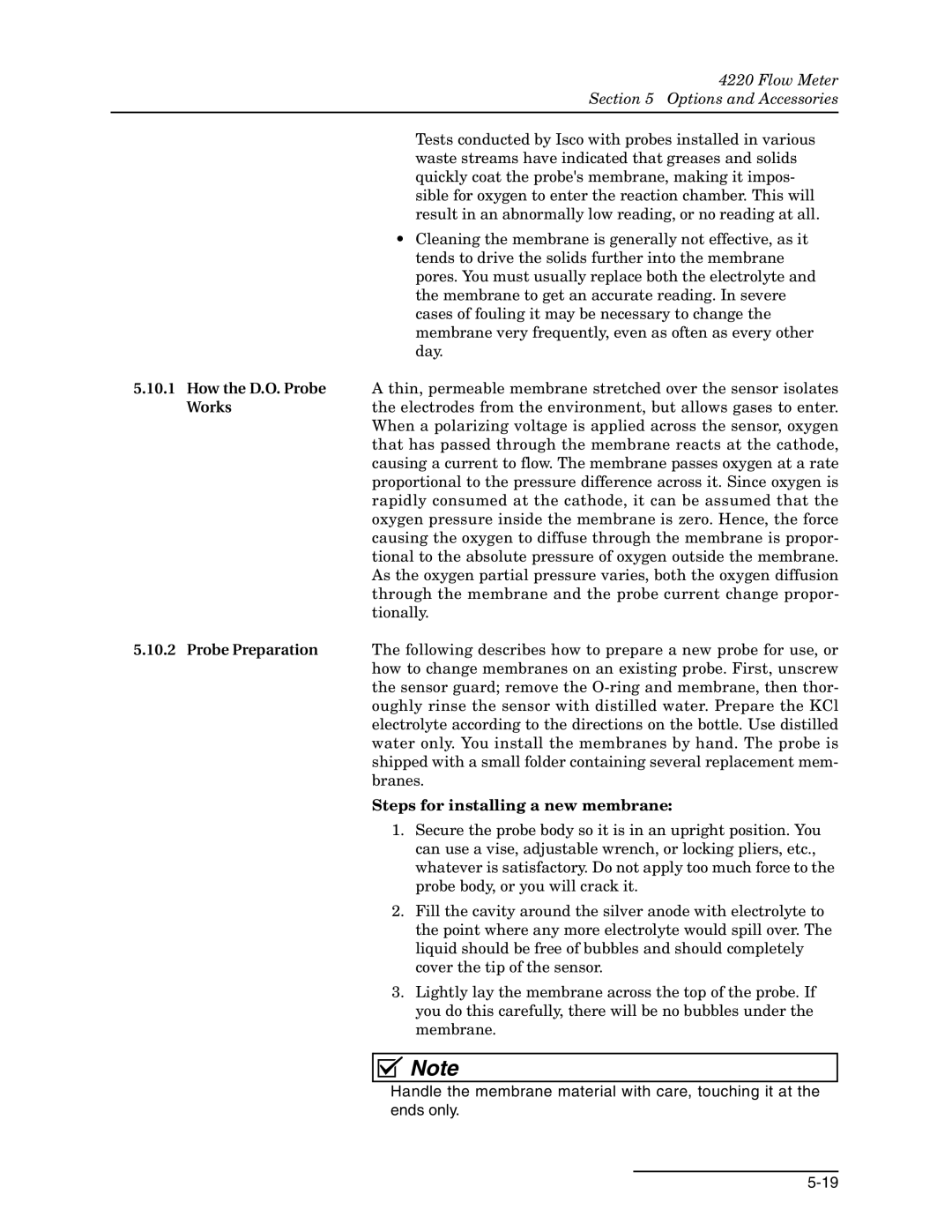
4220 Flow Meter
Section 5 Options and Accessories
Tests conducted by Isco with probes installed in various waste streams have indicated that greases and solids quickly coat the probe's membrane, making it impos- sible for oxygen to enter the reaction chamber. This will result in an abnormally low reading, or no reading at all.
•Cleaning the membrane is generally not effective, as it tends to drive the solids further into the membrane pores. You must usually replace both the electrolyte and the membrane to get an accurate reading. In severe cases of fouling it may be necessary to change the membrane very frequently, even as often as every other day.
5.10.1How the D.O. Probe A thin, permeable membrane stretched over the sensor isolates
Works | the electrodes from the environment, but allows gases to enter. | |
| When a polarizing voltage is applied across the sensor, oxygen | |
| that has passed through the membrane reacts at the cathode, | |
| causing a current to flow. The membrane passes oxygen at a rate | |
| proportional to the pressure difference across it. Since oxygen is | |
| rapidly consumed at the cathode, it can be assumed that the | |
| oxygen pressure inside the membrane is zero. Hence, the force | |
| causing the oxygen to diffuse through the membrane is propor- | |
| tional to the absolute pressure of oxygen outside the membrane. | |
| As the oxygen partial pressure varies, both the oxygen diffusion | |
| through the membrane and the probe current change propor- | |
| tionally. | |
5.10.2 Probe Preparation | The following describes how to prepare a new probe for use, or | |
| how to change membranes on an existing probe. First, unscrew | |
| the sensor guard; remove the | |
| oughly rinse the sensor with distilled water. Prepare the KCl | |
| electrolyte according to the directions on the bottle. Use distilled | |
| water only. You install the membranes by hand. The probe is | |
| shipped with a small folder containing several replacement mem- | |
| branes. | |
| Steps for installing a new membrane: | |
| 1. Secure the probe body so it is in an upright position. You | |
| can use a vise, adjustable wrench, or locking pliers, etc., | |
| whatever is satisfactory. Do not apply too much force to the | |
| probe body, or you will crack it. | |
| 2. Fill the cavity around the silver anode with electrolyte to | |
| the point where any more electrolyte would spill over. The | |
| liquid should be free of bubbles and should completely | |
| cover the tip of the sensor. | |
| 3. Lightly lay the membrane across the top of the probe. If | |
| you do this carefully, there will be no bubbles under the | |
| membrane. | |
|
|
|
| Note |
|
| Handle the membrane material with care, touching it at the |
|
| ends only. | |
